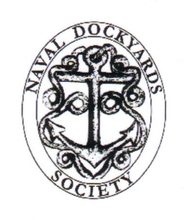Twentieth Century Naval Dockyards Devonport and Portsmouth: Characterisation Project
Ann Coats, David Davies, David Evans, Raymond Riley, 2016. https://doi.org/10.5284/1038393. How to cite using this DOI
Data copyright © Historic England, Dr Ann Coats, Dr David Davies, Dr David Evans, Dr Raymond Riley unless otherwise stated
This work is licensed under the ADS Terms of Use and Access.
Primary contact
Dr
Ann
Coats
Project Manager
Naval Dockyards Society
44 Lindley Avenue
Southsea
Hampshire
PO4 9NU
Resource identifiers
- ADS Collection: 2284
- DOI:https://doi.org/10.5284/1038393
- How to cite using this DOI
Overview

The digital archive comprises files generated during the course of the project, mostly record forms which can promote further research.
Record Forms describing accessed archival sources, some of which are minimally described or catalogued. These clarify archival descriptions and provide starting points for future research. They are cross-referenced with the report. They cover searches made at
- Historic England Archive (formerly the National Monuments Record) Swindon
- Institution of Civil Engineers Virtual Library
- MoD Admiralty Library, Naval Historical Branch, Portsmouth
- Plymouth and West Devon Record Office
- Portsmouth Museums and Records Service
- The National Archives of England and Wales, Kew
Artefact collections within a museum/institution
- National Museum of the Royal Navy, Portsmouth:
Model of Portsmouth Dockyard depicted just before the start of World War Two in September 1939. Ships in the dockyard include HMS Victory, HMS Rodney, Royal Yacht Victoria and Albert III and Monitor Roberts. Panels are numbered on underside. Made by Engineer Admiral Gurnell. (NMRNP, Dockyard Model [1938])
The project team was delighted to gain access to this key mid-twentieth century Portsmouth Dockyard model, allowing comparison with maps and providing three-dimensional visual details. Its eight baseboard sections are stored in large drawers, so it is rarely seen in its entirety. It shows many buildings which were lost during Second World War bombing and post-war modernisation. It is a positive example of how this project has interpreted and raised awareness of a museum artefact.
Portsmouth Record Plan of Drains, showing bombs which landed on the Naval Barracks, 1940–41 (including the Wardroom). This is valuable for showing the Victorian and Edwardian accommodation blocks before they were demolished in the 1960s, to be replaced, by the end of the C20, by concrete accommodation blocks. It also shows air raid shelters constructed beneath the Parade Ground.






